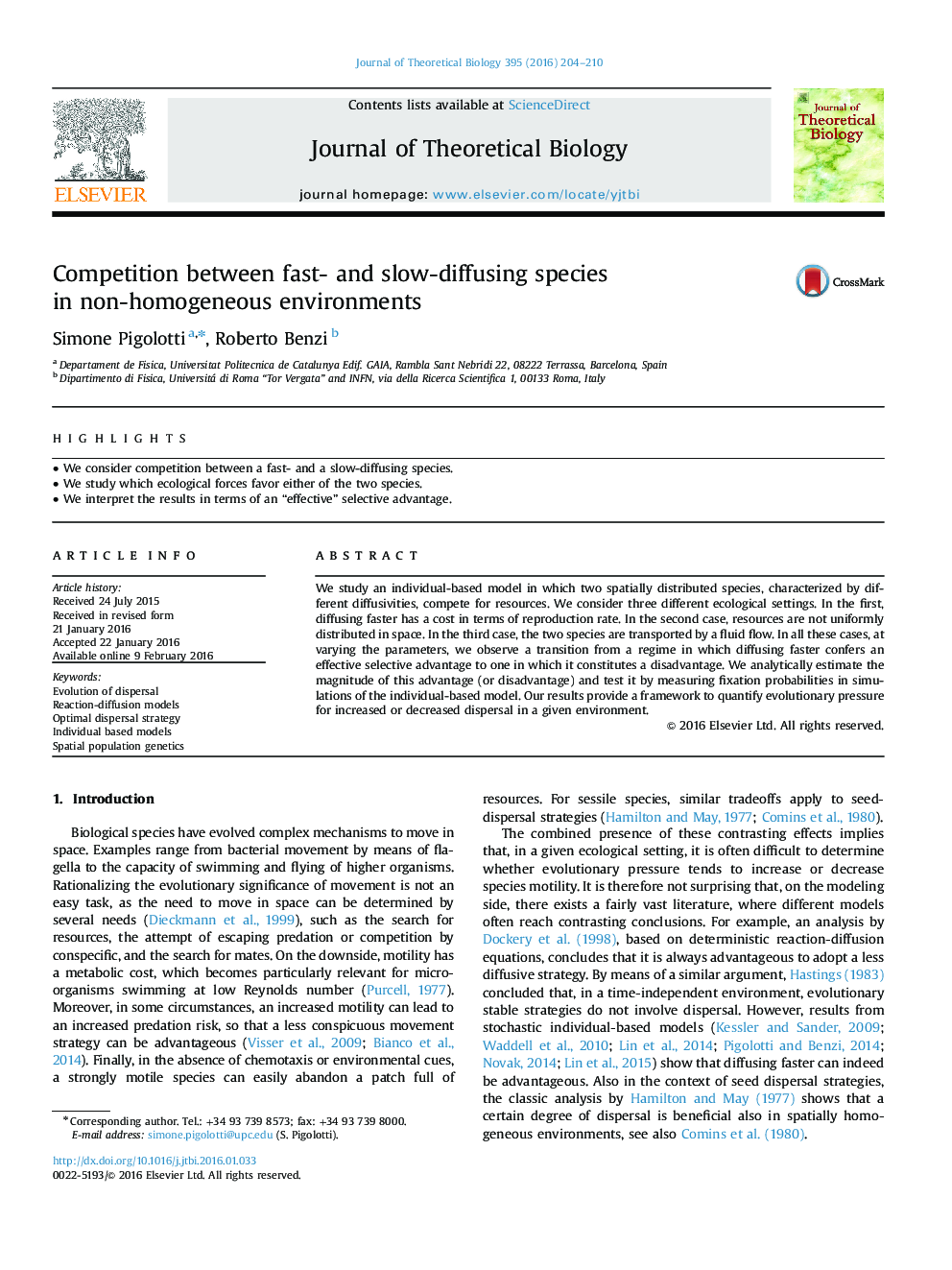| Article ID | Journal | Published Year | Pages | File Type |
|---|---|---|---|---|
| 4495849 | Journal of Theoretical Biology | 2016 | 7 Pages |
•We consider competition between a fast- and a slow-diffusing species.•We study which ecological forces favor either of the two species.•We interpret the results in terms of an “effective” selective advantage.
We study an individual-based model in which two spatially distributed species, characterized by different diffusivities, compete for resources. We consider three different ecological settings. In the first, diffusing faster has a cost in terms of reproduction rate. In the second case, resources are not uniformly distributed in space. In the third case, the two species are transported by a fluid flow. In all these cases, at varying the parameters, we observe a transition from a regime in which diffusing faster confers an effective selective advantage to one in which it constitutes a disadvantage. We analytically estimate the magnitude of this advantage (or disadvantage) and test it by measuring fixation probabilities in simulations of the individual-based model. Our results provide a framework to quantify evolutionary pressure for increased or decreased dispersal in a given environment.
